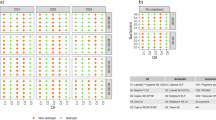Abstract
Spherical capsules have been used in various fields because of their many advantages. In many industrial applications, hydrophobic hard resins (e.g., polyacrylate, epoxy and polystyrene) are used as a shell material for stable packaging of ingredients within capsules. However, it is difficult to encapsulate ingredients in such capsules without loss by conventional techniques. The purpose of this study was to encapsulate hydrophobic ingredients within polyacrylate resin capsules with ultrahigh efficiency. In our methodology, a small volume of resin monomer solution containing the ingredients was first placed on a superoleophobic material and the resulting spherical droplets were then solidified by polymerization of the monomer. Doxorubicin (an anticancer drug), α-tocopherol (an antioxidant) and tetradecane (a phase change material used for heat storage) could be encapsulated in spherical hard capsules with almost no loss by heat and photopolymerization. We showed that tetradecane in the capsules had almost identical thermal properties to pure tetradecane. These results demonstrate that our technique is promising for encapsulation of hydrophobic ingredients in hard resin capsules.




Similar content being viewed by others
References
Dubey R, Shami TC, Rao KUB (2009) Microencapsulation technology and applications. Def Sci J 59:82–95
Tsuji K (2001) Microencapsulation of pesticides and their improved handling safety. J Microencapsul 18:137–147
Freitas S, Merkle HP, Gander B (2005) Microencapsulation by solvent extraction/evaporation: reviewing the state of the art of microsphere preparation process technology. J Control Release 102:313–332
Bhandari BR, Darcy BR (1996) Microencapsulation of flavour compounds. Food Aust 48:547–551
Son K, Yoo DI, Shin Y (2014) Fixation of vitamin E microcapsules on dyed cotton fabrics. Chem Eng J 239:284–289
Yang R, Xu H, Zhang YP (2003) Preparation, physical property and thermal physical property of phase change microcapsule slurry and phase change emulsion. Sol Energy Mater Sol Cells 80:405–416
Yang X, Gao N, Hu LD, Li JL, Sun YB (2015) Development and evaluation of novel microcapsules containing poppy-seed oil using complex coacervation. J Food Eng 161:87–93
Huang JX, Luo CD, Li WB, Li Y, Zhang YS, Zhou JH, Jiang Q (2015) Eccentric magnetic microcapsules for orientation-specific and dual stimuli-responsive drug release. J Mat Chem B 3:4530–4538
Huang YQ, Li Y, Fan HF, Xia Q (2014) Preparation and characterization of salicylic acid-loaded microcapsules as delivery systems for cosmetics. Integr Ferroelectr 152:22–28
Yoshida M, Mardriyati E, Tenokuchi D, Uemura Y, Kawano Y, Hatate Y (2003) Structural control of core/shell polystyrene microcapsule-immobilized microbial cells and their application to polymeric microbioreactors. J Appl Polym Sci 89:1966–1975
Takei T, Ikeda K, Ijima H, Kawakami K, Yoshida M, Hatate Y (2010) Preparation of polymeric microcapsules enclosing microbial cells by radical suspension polymerization via water-in-oil-in-water emulsion. Polym Bull 65:283–291
Kim JW, Ko JY, Jun JB, Chang IS, Kang HH, Suh KD (2003) Multihollow polymer microcapsules by water-in-oil-in-water emulsion polymerization: morphological study and entrapment characteristics. Colloid Polym Sci 281:157–163
Lee CF, Hsu ML, Chu CH, Wu TY (2014) Synthesis and characteristics of poly(methyl methacrylate-co-methacrylic acid)/poly(methacrylic acid-co-N-isopropylacrylamide) thermosensitive semi-hollow latex particles and their application to drug carriers. J Polym Sci Pol Chem 52:3441–3451
Sinha VR, Bansal K, Kaushik R, Kumria R, Trehan A (2004) Poly-epsilon-caprolactone microspheres and nanospheres: an overview. Int J Pharm 278:1–23
Ibrahim MA, Ismail A, Fetouh MI, Gopferich A (2005) Stability of insulin during the erosion of poly(lactic acid) and poly(lactic-co-glycolic acid) microspheres. J Control Release 106:241–252
Song W, Lima AC, Mano JF (2010) Bioinspired methodology to fabricate hydrogel spheres for multi-applications using superhydrophobic substrates. Soft Matter 6:5868–5871
Lima AC, Correia CR, Oliveira MB, Mano JF (2014) Sequential ionic and thermogelation of chitosan spherical hydrogels prepared using superhydrophobic surfaces to immobilize cells and drugs. J Bioact Compat Polym 29:50–65
Lima AC, Custodio CA, Alvarez-Lorenzo C, Mano JF (2013) Biomimetic methodology to produce polymeric multilayered particles for biotechnological and biomedical applications. Small 9:2487–2492
Rial-Hermida MI, Oliveira NM, Concheiro A, Alvarez-Lorenzo C, Mano JF (2014) Bioinspired superamphiphobic surfaces as a tool for polymer- and solvent-independent preparation of drug-loaded spherical particles. Acta Biomater 10:4314–4322
Hayase G, Kanamori K, Hasegawa G, Maeno A, Kaji H, Nakanishi K (2013) A superamphiphobic macroporous silicone monolith with marshmallow-like flexibility. Angew Chem Int Ed 52:10788–10791
Mu C, Sakai S, Ijima H, Kawakami K (2010) Preparation of cell-enclosing microcapsules through photopolymerization of methacrylated alginate solution triggered by irradiation with visible light. J Biosci Bioeng 109:618–621
Fang Y, Yu H, Wan W, Gao X, Zhang Z (2013) Preparation and thermal performance of polystyrene/n-tetradecane composite nanoencapsulated cold energy storage phase change materials. Energy Convers Manag 76:430–436
de Garcia CM, Rodriguez R (2013) Thermal storage nanocapsules by miniemulsion polymerization. J Appl Polym Sci 127:5059–5064
Zhang T, Wang Y, Shi H, Yang W (2012) Fabrication and performances of new kind microencapsulated phase change material based on stearic acid core and polycarbonate shell. Energy Convers Manag 64:1–7
Fang G, Li H, Yang F, Liu X, Wu S (2009) Preparation and characterization of nano-encapsulated n-tetradecane as phase change material for thermal energy storage. Chem Eng J 153:217–221
Acknowledgments
This research was partially supported by a grant from the Sankei Science Scholarship Foundation.
Author information
Authors and Affiliations
Corresponding author
Ethics declarations
This research was partially supported by a grant from the Sankei Science Scholarship Foundation (there was no grant number), and did not involve human participants and/or animals.
Rights and permissions
About this article
Cite this article
Takei, T., Terazono, K., Araki, K. et al. Encapsulation of hydrophobic ingredients in hard resin capsules with ultrahigh efficiency using a superoleophobic material. Polym. Bull. 73, 409–417 (2016). https://doi.org/10.1007/s00289-015-1497-y
Received:
Revised:
Accepted:
Published:
Issue Date:
DOI: https://doi.org/10.1007/s00289-015-1497-y




